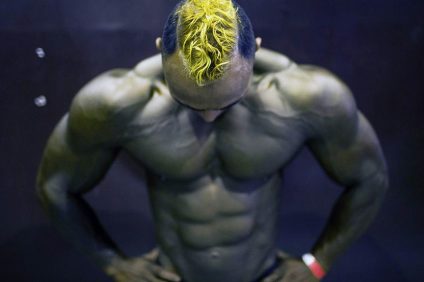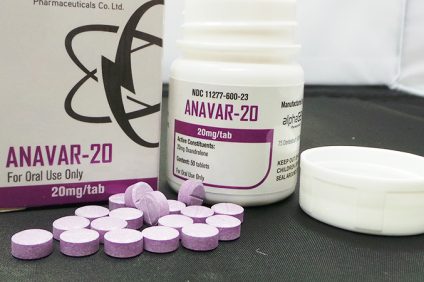Creatine monohydrate: how to load creatine? What are the effects of creatine?
Proper creatine loading is the most critical strategy for the optimal procedure on how to load creatine. Use loading and maintenance tips to get the best out of creatine supplement.
In 1992, creatine monohydrate was first used as a sports supplement. Since then, the popularity of creatine has been growing, and the number of people interested in it has also grown. With parents, they are interested to know whether creatine is safe for the health of their athletes, consumers are curious about how it works, and beginning bodybuilders ask how to take creatine, what time to take and with which fluids?
Despite the positive reviews about creatine, a considerable amount of scientific materials and athletes still have questions on how to load creatine. Questions began to arise since 1835 when the French chemist Michele Schövrel discovered an unknown component of the skeletal muscles, which he called creatine. From the Greek kreas, which means “meat”. He also found the proper use of creatine. And 160 years later, the muscle protein monohydrate was first used as an effective and safe sports supplement.
Coach Nick Tumminello conducted his analysis based on a vast number of scientific materials and conversations with the best experts in sports nutrition. His report on creatine clarifies the situation.

1. What is creatine?
Creatine is a nitrous organic acid derived from the amino acids’ glycine, arginine, and methionine. 95% of creatine is used in exercises for strength and is found in skeletal muscle. The remaining 5% is found in the heart, the brain, and the male genital glands.
2. How does creatine work?
According to the famous trainer and scientist David Sandler, “creatine allows you to carry out large amounts of work, which will help you to do more in training than usual.” An additional intake of creatine will increase the supply of phosphocreatine and creatine by 10-40%.”
3. Creatine effects: why do creatines work?
According to Jose Antonio, a professor at Nova Southeastern University and executive director of the International Society for Sports Nutrition, creatine serves as a fuel source for rapid exercise by increasing phosphocreatine stores in the body. Phospho-creatine is the determining factor in the production of energy in muscle tissue.
4. Who needs to use creatine?
Anyone who wants to increase muscle mass with proper creatine, increase muscle strength, and also increase anaerobic productivity should additionally take creatine. Dr. Antonio explains: “To date, creatine is undoubtedly the most effective nutritional supplement Scott Herman for increasing anaerobic productivity, as well as increasing muscle mass and muscle fiber sizes.”
5. Will creatine help build muscle?
Yes! In particular, studies show that:
- Creatine, in particular, creatine monohydrate, contributes to a mass increase without fat;
- Increases the indicators of maximum strength;
- Creatine improves muscular endurance;
- Increases anaerobic capacity and productivity.
6. Will creatine help to get rid of fat?
Yes! Creatine helps you get rid of fat and keeps metabolically active dry muscle tissue, which indirectly affects fat burning. Naturally, the more muscles in your body, the more you can work in the gym, and the more calories you can burn during and after your workout.
Besides, creatine helps to increase your metabolism through hydration. “In a well-hydrated cell, metabolic processes are faster,” says Dr. Antonio.
7. How to take creatine? How much creatine should I consume?
Take 3 to 6 grams of creatine monohydrate per day following the process on how to load creatine. It is recommended to take creatine after training in a complex with protein cocktails, geyners, amino acids or sports drinks, and also juice. In days when no training, take 3-6 grams of creatine products in the morning. The course lasts 1-2 months, then it is recommended to take a break for 3-4 weeks to restore the sensitivity of the muscles to the supplement.
8. What is creatine loading?
For the most rapid effect, take 10 to 20 grams of creatine monohydrate per day for 7-14 days. This technique is known as the “load” phase, it will shorten the time it takes to see the results from taking creatine. After loading, go to a maintenance dose of 3-6 grams per day.
9. When and why should I use loading creatine?
You do not need to use the download on how loading creatine. Creatine will work equally well after taking a maintenance dose for 4 weeks. However, if you want faster results, a load of creatine will help you see the results within 2 weeks of taking.
10. Is it true that creatine delays water?
Creatine helps cells to retain water, which is a boon to productivity. However, this can affect the weight of the body in the direction of its increase. Therefore, athletes who are forced to follow the body weight may need to take creatine cycles – especially 6 weeks before weigh-in.
11. How to choose the best creatine? What type of creatine is better to take?
To date, the most effective form of creatine is creatine monohydrate.
12. Is creatine safe? Are there any side effects of loading creatine?
According to Dr. Antonio: “Creatine is probably the most studied ergogenic agent in history”. It does not cause any harmful side effects. There is no evidence that it damages the kidneys, causes dehydration, and causes any other mythic symptoms.”
13. Is creatine for women safe? What are the reviews on creatine for weight loss?
Yes, if a woman wants to become stronger and build a beautiful sports body, she can safely take creatine. When losing weight, creatine for women will increase the intensity of training and consequently accelerate the process of fat loss.





